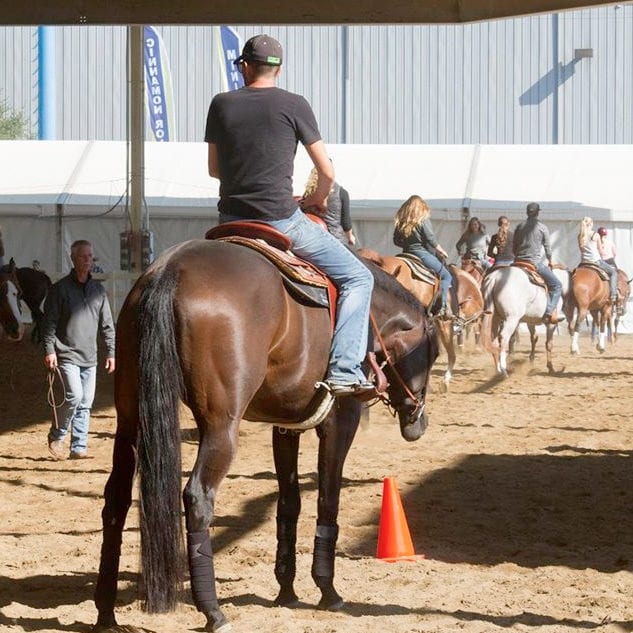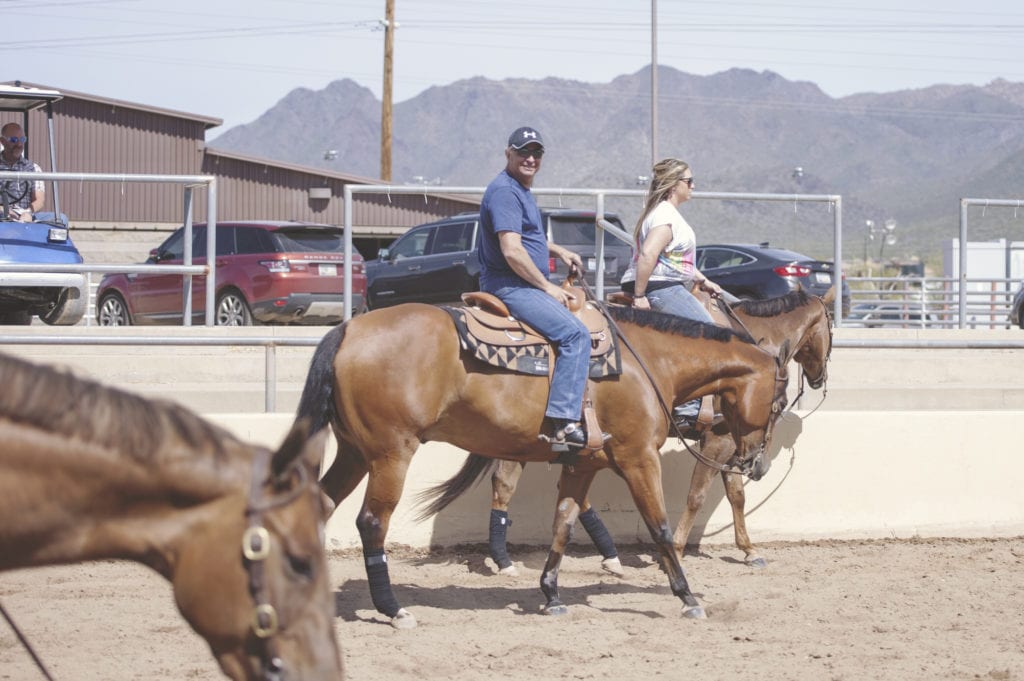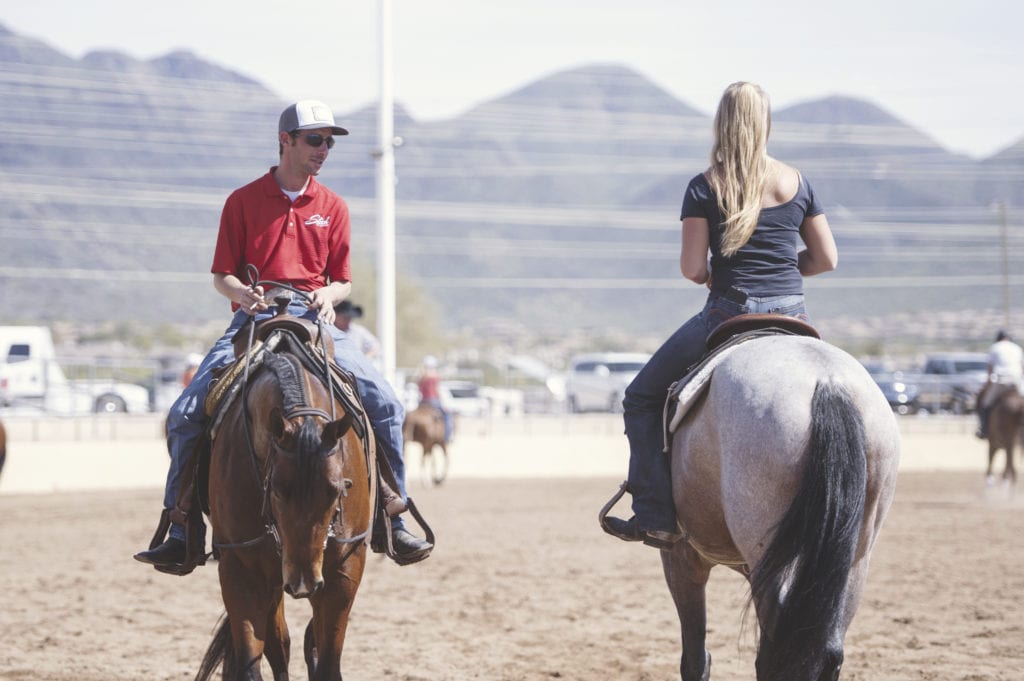Imagine if the next time you drove to work or went out to run an errand, there were no traffic signals, stop signs or speed limits to get you to your destination safely and more efficiently.
The roads would be chaos with cars, buses, and trucks of all shapes and sizes going in different directions and at various speeds. This disorganization sounds like a recipe for a lot of stress and anxiety or even worse – a collision.
When you drive, there are regulations, laws and even some road etiquette that help keep the roads organized and moving. For example, if someone lets you in, you may give them a wave to thank them for helping you out.
At times, the practice pens at horse shows can feel like a busy highway with no laws and no police to govern the horses and riders going in every direction. We all have the same goal in mind, warming up our horse as safely and effectively as possible so we can get to our destination – the show pen. We’ve all felt the stress and anxiety of a “crowded road” with horses of all shapes and sizes going different directions at various speeds. And unfortunately, we’ve all probably had one of those close calls or maybe, in fact, a collision with another horse or rider.
So how do we keep the practice pens safe and productive for all?
AQHA trainer, Karen Graham of Cave Creek, Arizona answers this question quite succinctly, “I try to be respectful of every facet. About the time I start to get mad at someone longing, I stop and think, I was longing myself a few hours ago.”
With the main goal of being respectful of our fellow riders in mind, we have compiled four simple reminders on how to keep the practice pen sane and civil while you prepare your horse for the day’s competition.
With many shows having two or more arenas running at the same time, you can have exhibitors trotting around and practicing spins for showmanship at the same time the hunter under saddle horses are cantering in the arena warming up for their class. Add some nerves and tension to the mix, and this can become a dangerous situation quickly.
To be productive in the practice pens, you have to have your mind on what you are trying to accomplish with your horse. Everything you and your horse are doing should have a purpose and maneuvers should be performed with that purpose in mind. Conversely, being aware of others will put you and your horse in the best position to be defensive if necessary to avoid trouble. Defensive driving, just like on a highway, is something that is necessary to avoid any safety issues in the practice pens.
Just like on the roadways, sometimes accidents cannot be prevented. If that happens, it is best to use your manners and be polite. Be sure that everyone is unharmed and then a genuine apology should follow no matter who is at fault. Nothing will be accomplished by getting upset or frustrated, especially right before you are to go in the show pen.
Not everyone will police themselves and act in a way that is beneficial and productive to others. Perhaps a set of cones is set up to practice a horsemanship pattern, and there is one rider that is running the pattern over and over without allowing anyone else a turn or someone is walking their horse along the rail chatting with another exhibitor.
Again, some good old fashioned manners can go a long way in this instance. Speak up and ask if you can take a turn or tell them you’d like to have the rail. Chances are the rider was so focused on their performance or caught up in their conversation, they didn’t realize what was going on around them.
Designated areas to practice particular events or specific time frames can also help to keep practice constructive and safe. Karen Graham agrees, “It would be great if show management would make a point of designating longing and riding areas.”
Because some classes need more space or have specific obstacles to practice, shows often have blocks of practice for specific events such as western riding or trail.
Are the rules any different in these pens? Not really. The goal is to get the most productive warm-up for your horse in the best environment.
In a trail warm-up, be sure you are giving others ample time to work on an obstacle, and if you are done, be sure to move to the side out of the way.
In western riding practice, if you’ve done the line five times in a row, give your horse a break and let another rider take a turn.
We’ve all seen that rider staring down at their horse’s neck, and they don’t realize how close they are to another horse or rider until it is too late. While there are no speed limits or traffic signals in our practice pens, we can all have a positive and active warm-up in route to our destination. Being courteous and looking up and around you can be your best tools when navigating the chaotic roadways of the practice pens.
Everyone is there for a universal love and goal which is spending time on our horses and performing as best as we can. Using a little etiquette and respect for your horse and others will lead to a beneficial experience for all. Karen summed it up best, “Just be thankful you are riding!”
Do you have any reminders and tips you’d like to share? Let us know.













